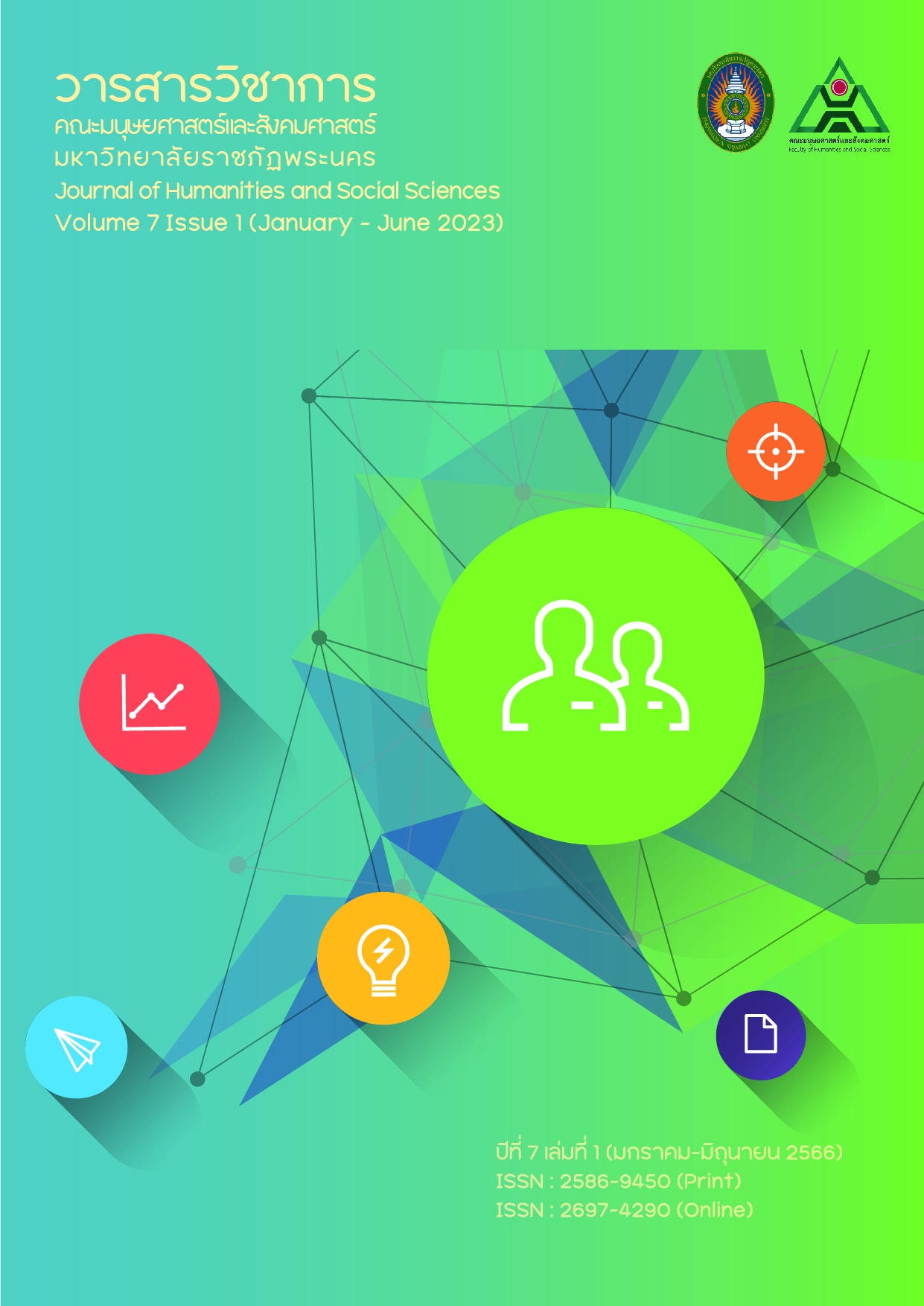การประมาณอัตราการสูญเสียดินในพื้นที่ลุ่มน้ำเพชรบุรีด้วยเทคโนโลยีภูมิสารสนเทศ
Main Article Content
บทคัดย่อ
งานวิจัยนี้มีวัตถุประสงค์เพื่อประมาณอัตราการสูญเสียดินในพื้นที่ลุ่มน้ำเพชรบุรีด้วยสมการสูญเสียดินสากลและเทคโนโลยีภูมิสารสนเทศ ครอบคลุม 2 ฤดูกาล ได้แก่ ฤดูฝน ระหว่างพฤษภาคมถึงเดือนตุลาคม พ.ศ. 2564 และฤดูหนาว ระหว่างเดือนพฤศจิกายน พ.ศ. 2564 ถึงเดือนมกราคม พ.ศ. 2565 โดยปัจจัยที่นำมาใช้ในการประมาณอัตราการสูญเสียดิน ประกอบด้วย การกัดกร่อนของฝน (R-Factor) ความคงทนของดิน (K-Factor) ความยาวของความลาดชัน (L-Factor) ความลาดชัน (S-Factor) การจัดการพืช (C-Factor) และมาตรการอนุรักษ์ดินและน้ำ (P-Factor) ผลการศึกษาพบว่า ลุ่มน้ำเพชรบุรีในช่วงฤดูฝนมีอัตราการสูญเสียดิน 0 – 749.11 ตัน/เฮกตาร์ ส่วนในฤดูหนาวมีอัตราการสูญเสียดิน 0 – 93.80 ตัน/เฮกตาร์ เมื่อพิจารณาพื้นที่ที่มีการสูญเสียดินสูงพบว่าอยู่ในบริเวณที่มีความลาดชันสูง และเป็นป่าไม้แบบผลัดใบ ซึ่งจะทิ้งใบในช่วงฤดูแล้งที่ไม่มีฝนตก ดังนั้นเมื่อมีฝนตกจึงขาดเรือนพุ่มที่จะรองรับแรงกระทบจากเม็ดฝนทำให้เกิดการสูญเสียดินในพื้นที่
Article Details
เอกสารอ้างอิง
Busaraporn Chutaptim, Somjate Thinnakorn, Chavalee Cherkit . (2005) Soil Erosion Assessment in Bang Saphan Watershed. Prachuap Khiri Khan Province (Research report). Royal Irrigation Department:Bangkok.
Chakchai Chumchit. (1999) Application of Geographic Information System and the International Soil Loss Equation to Determine Chuan Watershed Quality Classification. Mahidol University/Bangkok.
Department of Land Development. (2000). Soil erosion in Thailand. Bangkok: Land Development Department
Department of Land Development. (2002). Evaluation of soil loss in Thailand. Bangkok: Land Development Department
Department of Land Development. (2020). Status of soil erosion in Thailand. Bangkok: Land Development Department
FAO and ITPS. (2015). Status of the world’s soil resources (SWSR) – Technical Summary. Food and Agriculture Organization of the United Nations and Intergovernmental Technical Panel on Soils, Rome, Italy.
Gebreyesus Brhane and Kirubel Mekonen. (2009). Estimating Soil Loss Using Universal Soil Loss Equation (USLE) forSoil Conservation planning at Medego Watershed, Northern Ethiopia. The Journal of American Science, Volume 5 - Number 1 (Cumulated No. 16), January 1, 2009, 85-69
Hydro – Informatics Institute (Public Organization) (2012). Required Bangkok: Apply for Asde Construction Corporation Co., Ltd.
Kang-tsung Chang. (2002) Introduction to Geographic Information Systems. Singapore: McGraw-Hill,
Lillesand, Thomas M.; Kiefer, Ralph W.; & Chipman, Jonathan W. (2004). Remote Sensing and Image Interpretation. 5th ed. New York: Wiley.
Niphon Tangtham. (2002). A mathematical model of soil erosion. and sediment pollution in watershed areas. Kasetsart University Bangkhen Campus, Faculty of Forestry, Department of Conservation.
Nitiphat Nuanmano. (2013). Erosion of soil on Kho Hong Mountain and economic loss value, Hat Yai District, Songkhla Province. (Master's thesis). Songkhla: Prince of Songkhla University.
Wischmeier, W.H.and Smith,D..Z (1978). Predicting Rainfall Erosion Losses a Guide to Conservation Planning, Agriculture Handbook No.282, USDA, Washington, DC.
Prakkha Kodsub. (1995). Application of geographic information system and universal soil loss equation in soil erosion assessment for soil and water conservation planning. Mueang Nan District and Wiangsa District, Nan Province (Master's thesis). Bangkok: Mahidol University. Retrieved from https://tdc.thailis.or.th/tdc/
Rachadapan Pholkoed & Weeraphart Khunrattanasiri. (2012). Application of remote sensing and geographic information system for soil erosion assessment in Huai Nam Rit watershed, Uttaradit province. Journal of Forest Management (Thailand), 6(12), 83-84.
Saowaluk Sathongthian. (2016). Application of Geographic Information System and International Soil Loss Equation to assess soil erosion Khwae Noi River Basin Phitsanulok Province Department of Geography. Naresuan University
Sawet Prakairungrasamee, Wichai Pantanahiran and Charlie Nawanukroh. (2011). Soil erosion analysis. The universal soil loss equation (USLE) was used to estimate plant nutrient losses in the Huai Mae Prachan watershed. Social Science Journal Srinakharinwirot University, 14(2011), 92-103
Sombat Yu-Muang. (2015). Geographic Information System. Geo-Informatics Research Center for Thailand, Department of Geology, Faculty of Science Chulalongkorn University Retrieved from http://www.gisthai.org/index.html
Teerawat Kamolrat, Supetch Chirakajonkul. (2012). Comparative Mapping of Geo-Informatics Technology and Erosion Assessment for Land Erosion by Lamphraploeng Upper Nakhon Ratchasima Province. Technology Database, 20(2), 167-177.


